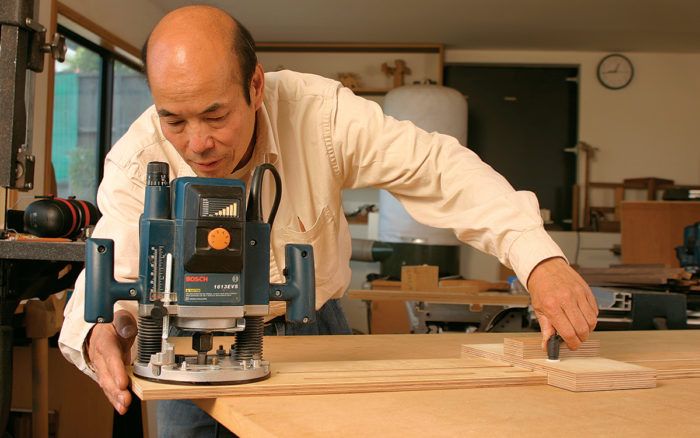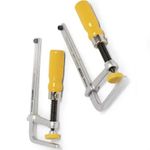5 Smart Router Jigs
Get more from your router with this set of easy-to-make accessories.

Synopsis: A router gains a lot of capabilities when used with these five jigs designed by custom furniture maker Yeung Chan. With Chan’s jigs, you can use the router to cut perfect circles, trim large panels, cut dadoes at any angle, trim edge-banding quickly and cleanly, and make turnings with a router.
Few woodworkers enjoy the luxury of a spacious shop, and I’m no exception. Lacking the space for many large machines, I rely on my router when building furniture. However, used on its own, the router is limited in its abilities. More often than not, I use it in conjunction with various shopmade jigs that increase its ability to quickly and accurately cut circles, make edge profiles, cut dadoes, trim edge-banding, and even substitute for a lathe.
The five jigs illustrated here are all made from cheap and stable plywood or medium-density fiberboard (MDF) and require only a few pieces of hardware, available through Lee Valley (leevalley.com; 800-267-8767) or Rockler (rockler.com; 800-279-4441). These router jigs are as easy to use as they are to make.

Cut perfect circles
This jig can be used to rout a circle with a maximum diameter of 72 in., but the design can be modified for other diameters. First, drill a 1/4-in.- dia. hole, 1/4 in. deep, in the middle of the workpiece. If you don’t want the hole to show, work on the underside. Next, mark a point on the desired edge of the circle, place the sled over the base, and fit the jig’s pin in the center hole. Move the base in or out until the bit is on the mark, then lock the sled.
Turn on the router and plunge down to start the initial cut, which should be less than 1⁄8 in. deep, just enough to define the circle. Use a jigsaw to cut away the outside pieces, leaving about 1⁄8 in. outside the final size of the circle. This method enables you to support the corners as they are cut off so that they won’t damage the finished workpiece. Once the bulk of the waste has been removed, the router has to make only a light final cut. If you’re working with solid wood, pay attention to the grain’s orientation and the bit’s rotation. Climb-cut when necessary to avoid tearout.

From Fine Woodworking #177
To view the entire article, please click the View PDF button below.
Fine Woodworking Recommended Products

Double Sided Tape

MicroJig Matchfit dovetail clamps

Incra Miter 1000HD








Log in or create an account to post a comment.
Sign up Log in